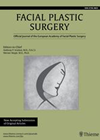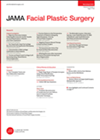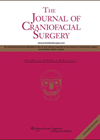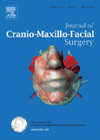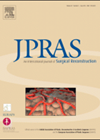
Journal Reviews
Lateral crura-alar ring
Lateral crura incision or excision are common procedures for most rhinoplasty surgeons despite the fact that they have potential complications such as nostril rim retraction, bossa tip formation and alar wall collapse during breathing. Fortunately, nowadays there is a trend...
Chemical peels
Chemical peels are methods of skin resurfacing, and date back to ancient Egypt. Chemicals are applied and induce injury at specific depths in skin; the wound promotes collagen remodelling and improved surface appearance. There are three types: superficial, medium and...
Laser skin resurfacing
The increasing demand from patients to attain more youthful skin has driven the field of facial rejuvenation. Ablative technologies and laser technology are amongst of the most effective modalities. Laser resurfacing is a safe and effective treatment. Newer technologies have...
Creation of natural double eyelids in Asian patients
This article shows a simple, safe and elegant technique to deal with single eyelids in Asian patients, addressing the lack of supratarsal crease and the puffiness of the lid without needing a full upper lid blepharoplasty incision. The use of...
How to measure functional outcome after nose surgery
The authors of this paper perform a systematic review of the literature on two of the most popular patient-reported measures for nasal obstruction, the Nasal Obstruction Symptom Evaluation (NOSE) and the visual analog scale (VAS). They compare pre and postoperative...
Not all faces are alike
The author examined 108 photographs of faces taken in an exact front view, in order to look for different patterns of facial shapes: round, square, heart shaped, oval and long. The author recognised that this was a qualitative analysis and...
Complications of plates in fibula free flaps
Good functional reconstruction of the mandible remains challenging for the maxillofacial surgeon. The fibula osteocutaneous flap is widely used as a method of mandibular reconstruction and it can withstand multiple osteotomies and a thus requires hardware to adapt and hold...
Cheek reconstruction following melanoma excision
Malignant melanoma occurs most commonly on the cheek and thus are usually diagnosed early, rarely needing large reconstructions following advanced disease. This is a retrospective looking at 26 patients identified that had undergone treatment for cheek melanomas between 1996 and...
Immediate planned reconstruction following complex craniofacial reconstruction
The immediate reconstruction of 3-D craniofacial defects is extremely difficult and can be more difficult than the ablation. Perfect shape and symmetry is required. In the past decade this has largely improved with CAD/CAM engineering. The authors report a one-step...
Extranodal NK/T cell lymphoma in the head and neck
The authors present a retrospective single institution review of patients with a very rare variant of non-Hodgkin lymphomas (NHL). They report on the occurrence, clinical course and outcomes of their patients with natural killer/T-cell lymphoma (NKTCL) nasal type. Sixty-three patients...
Social media usage by UK plastic surgeons
Facebook, Twitter, LinkedIn, RealSelf, YouTube and Research gate are used by British plastic surgeons, as well as website ownership. Sixty-two percent of plastic surgeons had websites (some shared) – a rise from 36% in 2011. The message is directed to...
Electrochemotherapy for BCCs
A remarkable account of an effective non-surgical treatment for basal cell carcinomas (BCCs). Electrochemotherapy (ECT) consists of making the area surrounding the lesion temporarily permeable using electric pulses (under local anaesthesia), then bleomycin is administered to the area. The treatment...


